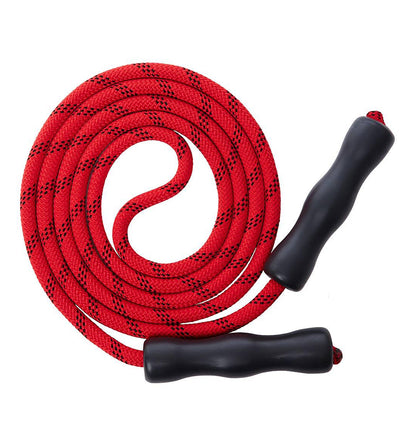The Spartan Fit App Workout of the Week: Strength & Stamina Skills

Each week, Spartan Director of Training Sam Stauffer is providing select workouts from the Spartan Fit app. For the full Spartan training experience, delivering Spartan-designed workouts and race-like simulations, download the Spartan Fit App now. And for the full database of Spartan Fit app workout previews, click here.
Plus, get this entire workout, and more just like it, on the Spartan Fit app.
The Strength & Stamina Skills full-body workout will test your power, strength, and endurance over four unique circuits. This workout falls under our conditioning series in the Spartan Fit app and is designed to boost your lung capacity and power output. Just remember, pace yourself!
The Workout
Focus on maintaining a constant effort throughout all four circuits. Each circuit is made up of two exercises and your goal is to finish the prescribed number of reps and sets with as little rest as possible. You’ll get two minutes of rest between circuits so take advantage and aim to lower your heart rate with deep breaths.
More Fit App Workouts: Full-Body Blast
The Setup
For the entire workout, you’ll be needing a few items: Plyo Box, Kettlebell, Pull-Up Bar, and a Jump Rope. For the moves I’ve highlighted below, you’ll only need a plyo box and a kettlebell of moderate weight, but you can grab a jump rope for the rest of the workout from the Spartan Shop.
The Strength Circuit
Box Jump:
Choose a box height that is manageable for you. Your goal is not to jump as high as you can, but rather to explode off of the ground and land in a controlled position.
Start by standing tall in front of the box with your hands out in front of you. Swing your hands back, swiping past your hips. Letting your hips take the swipe is their cue to hinge back into the athletic position. (This is your loaded position.) Jump by bringing your hips forward into full extension and your arms back out in front of you. Land on top of the box in a hinged (athletic) position. If you find yourself landing in the bottom-of-a-squat position, then the box is too high. Complete the rep by stepping down from the box. It's keep to step off of the box—as opposed to jump—to avoid ankle injuries. Trust me, I see it happen often.
Pro Tip: It's about quality over quantity. The Box jump is an excellent exercise and has a ton of benefits from increased power output to improved motor function. However, it’s easy to get carried away with this exercise. Here are the two common misuses I see with this exercise:
- Going for reps instead of form (conditioning or cardio mindset).
- Using a box that is too high for the individual (pride).
It's best to use the box jump as a plyometric exercise. This means you’re working on power output and control, not boosting your heart rate (of course, an elevated heart rate will be a common side effect. Each rep should count and be completed with maximal output and a special focus on the landing component.
Related: The Burpee Plyo Box Workout: Get More Gains and Build Power
Kettlebell Swing Snatch:
As the exercise difficulty ladder goes, this one’s pretty high up there as it requires extra care, skill, and experience. Choose a kettlebell of moderate weight. It should not be too heavy or too light. My rule is if you can’t clean it properly, then you shouldn’t snatch it. My second rule is that if you can’t single-arm swing it, then you shouldn’t swing snatch it either.
Begin by gripping the kettlebell out in front of you with one hand in a hinged (loaded) position and your hand other out by your side. Hike the kettlebell and swing it out in front of you. This will put you into the swinging position and is the best way to start this exercise.
On the second rep, instead of performing a single-arm swing, you are going to perform a snatch by swinging the kettlebell completely overhead. Do this by leveraging the momentum that your hips created and controlling the weight into an overhead racked position.
On the way down you will push the weight forward allowing the weight to be guided by your shoulder’s end range of motion—don't let it fall in a jerky motion. The swing up and the swing down should be smooth, like a pendulum.
Lastly, you will guide the weight all the way down into a catch position with your hips loaded and ready for the next rep. Repeat until you’ve completed all of your prescribed reps.
Pro Tip: This exercise is not for everybody as it is very advanced. If you have not practiced this movement before then I highly suggest working with a fitness professional who can guide you up the progression scale.
Elbow (or Palm) Plank Hip Tap:
This one is sure to challenge your core, figuratively and literally. The best aspect of this exercise is that it can be scaled for all fitness levels while still maintaining its integrity and delivering results.
Begin in a plank position with your feet roughly shoulder-width apart. Reach one hand back and tap the side of your hip. Reset into the plank position and repeat on the other side. One tap on each side will count as one total rep.
Pro Tip: Let the first rep act as feedback so you can adjust your form.
- If you can perform this exercise with little to no hip wobbling than you can narrow your base of support by closing the gap between your feet.
- If you found yourself struggling to maintain control while reaching your hand back, then widen your base of support by widening the gap between your feet.











